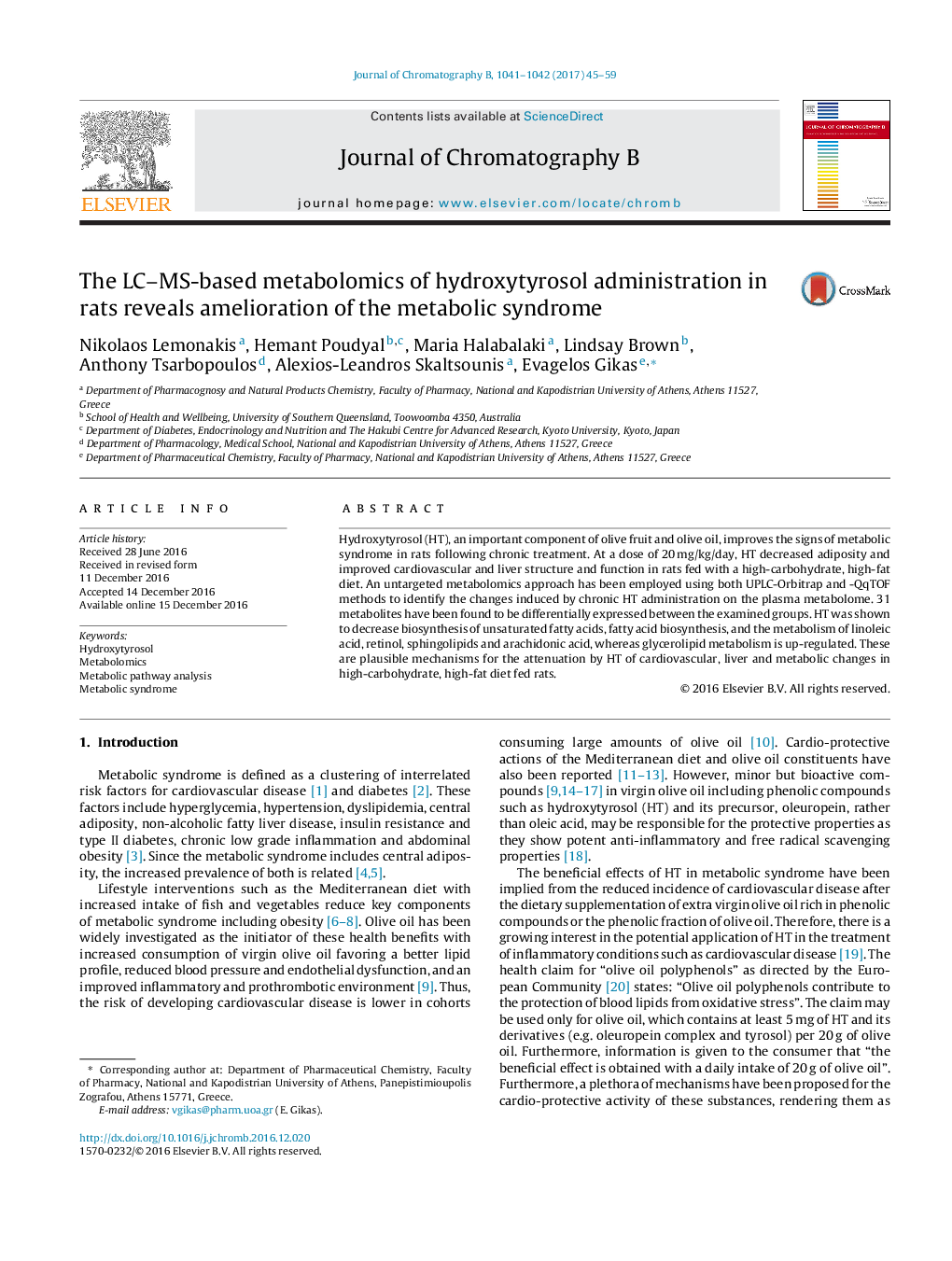| Article ID | Journal | Published Year | Pages | File Type |
|---|---|---|---|---|
| 5136507 | Journal of Chromatography B | 2017 | 15 Pages |
â¢A dual LC-MS (orbitrap and qQTof) metabolomics methodology has been developed for assessing the plasma rat metabolome of a metabolic syndrome model.â¢The metabolomics methodology has been fully validated using multivariate analysis.â¢Chronic administration of HT has been shown to produce intense metabolomics changes.â¢The changes observed are in accordance with pharmacological data.
Hydroxytyrosol (HT), an important component of olive fruit and olive oil, improves the signs of metabolic syndrome in rats following chronic treatment. At a dose of 20Â mg/kg/day, HT decreased adiposity and improved cardiovascular and liver structure and function in rats fed with a high-carbohydrate, high-fat diet. An untargeted metabolomics approach has been employed using both UPLC-Orbitrap and -QqTOF methods to identify the changes induced by chronic HT administration on the plasma metabolome. 31 metabolites have been found to be differentially expressed between the examined groups. HT was shown to decrease biosynthesis of unsaturated fatty acids, fatty acid biosynthesis, and the metabolism of linoleic acid, retinol, sphingolipids and arachidonic acid, whereas glycerolipid metabolism is up-regulated. These are plausible mechanisms for the attenuation by HT of cardiovascular, liver and metabolic changes in high-carbohydrate, high-fat diet fed rats.
